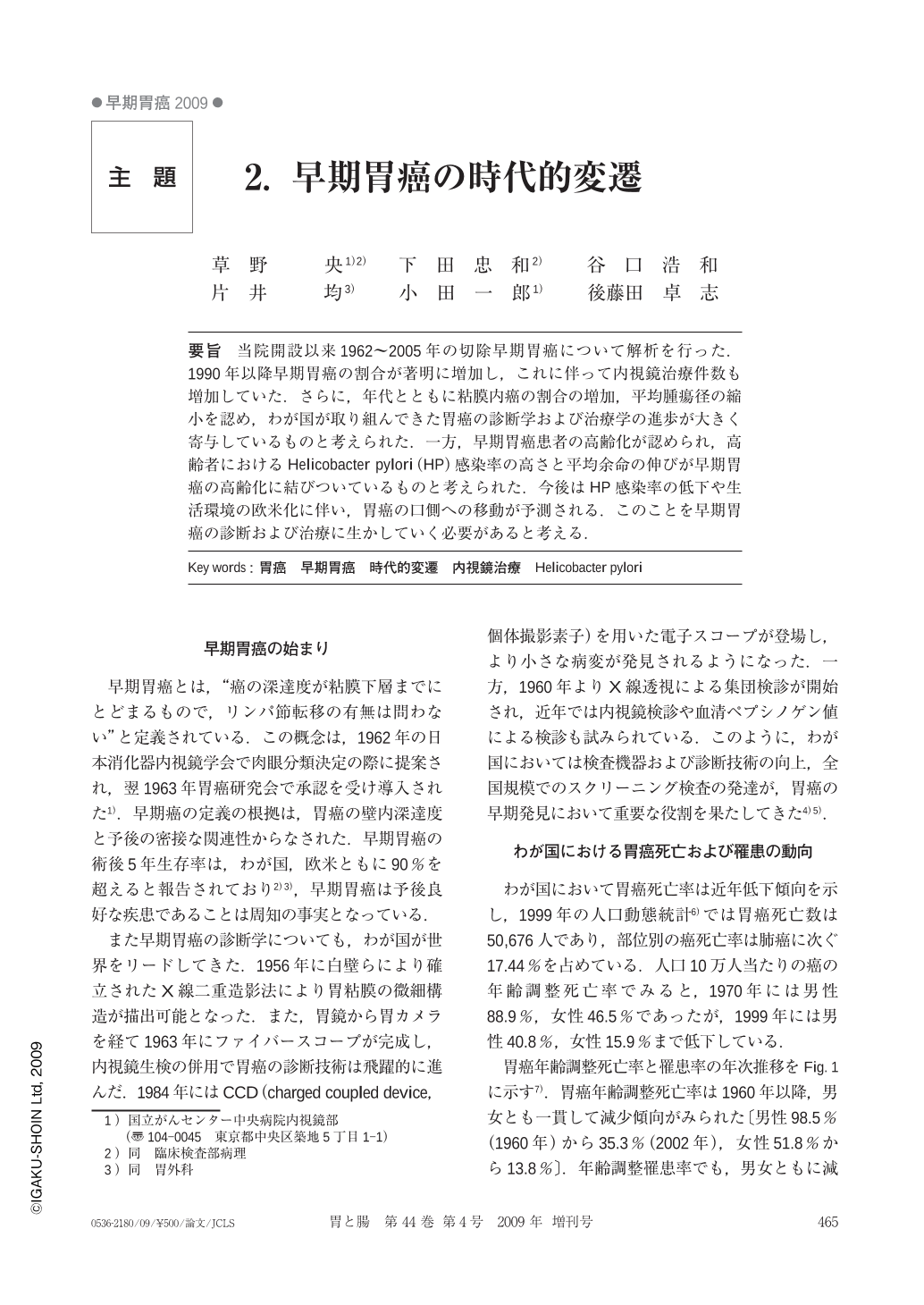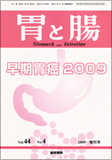Japanese
English
- 有料閲覧
- Abstract 文献概要
- 1ページ目 Look Inside
- 参考文献 Reference
- サイト内被引用 Cited by
要旨 当院開設以来1962~2005年の切除早期胃癌について解析を行った.1990年以降早期胃癌の割合が著明に増加し,これに伴って内視鏡治療件数も増加していた.さらに,年代とともに粘膜内癌の割合の増加,平均腫瘍径の縮小を認め,わが国が取り組んできた胃癌の診断学および治療学の進歩が大きく寄与しているものと考えられた.一方,早期胃癌患者の高齢化が認められ,高齢者におけるHelicobacter pylori(HP)感染率の高さと平均余命の伸びが早期胃癌の高齢化に結びついているものと考えられた.今後はHP感染率の低下や生活環境の欧米化に伴い,胃癌の口側への移動が予測される.このことを早期胃癌の診断および治療に生かしていく必要があると考える.
We examined the changing trend of early gastric cancer in Japanese, who underwent surgery and endoscopic resection from 1962 to 2005 in the National Cancer Center Hospital(Tokyo, Japan). Early stage gastric cancer(T1)has been increasing especially from 1990. The rate of early gastric cancer among all gastric cancers is 71.2% in 1980-90 and 82.1% in 2000-2005. According to this fact, the endoscopic resection rate of all early gastric cancers has shown a remarkable increase since 2000. The size of early gastric cancer is smaller than that seen previously and the ratio of intramucosal cancer is increasing. This phenomenon reflects the development of endoscopic technique and progression of pathological diagnosis with biopsy.
In recent years, the life style of Japanese has changed to a Western style. Also, the incidence of Helicobacter pylori infection in the second generation is low, as is the incidence or distribution of intestinal metaplasia. From such a situation,qualitative alteration is expected, as the location and histological type of early gastric cancer will be changed.

Copyright © 2009, Igaku-Shoin Ltd. All rights reserved.


